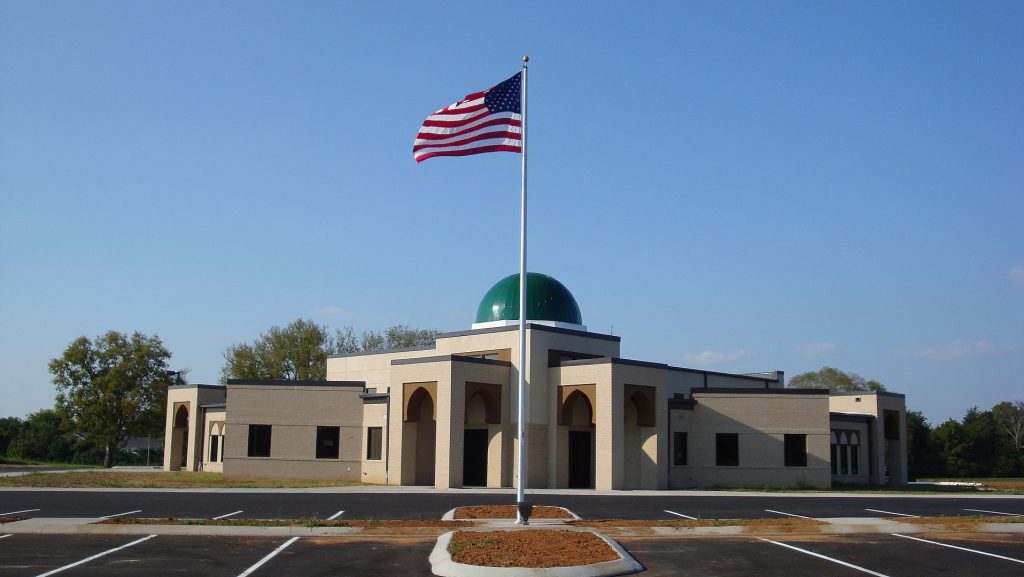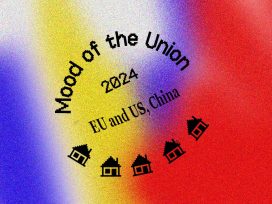Democrats have been consistently losing ground with both people of colour and people of faith in virtually every midterm and general election cycle after 2008. Republicans, meanwhile, have seen consistent gains with many constituencies. What occurred in 2016, therefore, was not an aberration – but the culmination of long-running electoral trends.
Following the emergence of Trump on the political scene, however, there was a bifurcation in the racial trends: white people grew increasingly alienated from the GOP, beginning in the 2016 Republican primaries and persisting through the 2020 election eve polling. Meanwhile, Republicans continued to make gains among people of colour throughout the Trump Administration.
Indeed, Edison exit polls, AP VoteCast, the American Election Eve Poll, and precinct voting data all seem to tell the same story: Trump did worse with whites than he did in 2016, and better with black, Hispanic and Asian voters.
A good deal of attention has been paid to these racial trends – but how did Trump fare with religious voters?

The Islamic Center of Murfreesboro, Tennessee. Photo by Saleh M. Sbenaty, CC BY-SA 3.0 via Wikimedia Commons
Analyses have often focused narrowly on groups where Democrats have seen gains, and states where that might have mattered. For instance, many have flagged apparent Democratic gains with white evangelicals in particular, and how it could have influenced the outcome in Georgia (again, Democrats significantly increased their vote share with whites overall). These insights are interesting and valuable. However, it is also productive to zoom out at the broader picture of the U.S. religious landscape and how it has evolved over the Trump years. That is, not just looking at white evangelicals, but Protestants overall. And not just looking at Protestants and Catholics, but also Mormons, Muslims, Jews and other believers.
To do this, I charted the margins between Democrats and Republicans among religious voters from 2016 through 2020 (more info on the data available here). What we see is that the GOP continued to gain — and Democrats continued to lose ground – with people of faith virtually across the board. There were, however, two notable exceptions: non-religious Americans and Catholics.
How can these trends be explained?
First thing to note: it is not incidental that Democrats are seeing attrition among people of faith at the same time that Republicans are gaining among people of colour. African Americans and Hispanics, for instance, tend to be more religious and socially conservative than whites on average. People lose sight of this because many minority populations have decisively skewed towards Democrats. However, this does not mean they are liberal. In fact, African Americans and Hispanics are among the least ‘culturally left’ constituents within the Democratic coalition. And as the Democratic Party leans ever more into niche ‘cultural’ issues at the expense of bread-and-butter issues, it seems as though many minority voters are growing alienated from the party. Again, this was a trend that preceded Trump, but has continued under his tenure unabated.
The most dramatic shift among religious groups (and for many, perhaps the most surprising) seems to have taken place among Muslims. But in fact, these shifts should not be surprising as they, too, are likely intimately bound up with shifts along racial lines. While Islam is often associated with Arabs in the American imagination, in fact a plurality of U.S Muslims are African American (both ‘black’ and of more recent African heritage). Significant shifts among African Americans, therefore, likely translate into shifts among Muslims.
However, there are likely other factors at work as well: Trump campaigned in 2016 on banning Muslims from the United States and confronting ‘radical Islam’ worldwide. Yet incidents of Islam-affiliated terrorism declined precipitously in the United States between 2015 and 2019. As these attacks faded, Trump largely turned his mind to other priorities. Indeed, after militarily rolling back ISIS and assassinating its leader, he began trying to draw down troops from the Middle East. He leaves office as the only president since Jimmy Carter who started no new wars during his administration (although he did continue and intensify some pre-existing campaigns). As Trump’s perceived hostility towards Muslims softened over the course of his administration, it seems Muslim antipathy towards Trump followed a similar path.
Mormons were also cool to Trump in 2016 – with many voting for third-party challenger Evan McMullin rather than supporting Trump or Clinton. However, since the election, many Mormon political leaders, such as Mitt Romney, have partially reconciled themselves with Trump. It would appear as though Mormon voters have too.
Many U.S. Christians and Jews, meanwhile, analogize Trump with King Cyrus the Great: a friend to the faithful, even if he is not one of them. An instrument of God, even if he is not a man of God.
Trump has never attended religious services consistently. Although he claimed in 2016 that his favorite book is the Bible, he could not even state a single verse that resonates with him. More recently, he tear-gassed Americans in order to take a photo with a Bible in front of an historic D.C. church – which he never opened or quoted in his remarks. He does not comport himself in anything like a Christ-like manner and is reported to regularly mock religious people behind their backs.
Nonetheless, for many religious voters Trump has delivered in a way that is unparalleled by other modern administrations:
He appointed three conservative Supreme Court justices, all of whom are staunch supporters of religious liberty and freedom of conscience. He has transformed the lower courts almost as dramatically — and promptly reversed-course on a number of pivotal cases from the Obama Administration involving religion, freedom of conscience, etc. His administration dramatically reshaped government regulations and enforcement in accordance with the preferences of religious advocacy groups. And throughout his tenure, the President has struck a hard line in the culture wars — unapologetically embracing Judeo-Christian nationalism.
Also important to many American Jews and Christians has been Trump’s unrelenting support for Israel. Trump has embraced expanded settlement building in formally Palestinian territories. He has moved the U.S. Embassy in Israel to Jerusalem, implicitly recognizing this contested territory as belonging to Israel. He has significantly increased U.S. aid to Israel. His administration helped broker historic peace deals between Israel and Bahrain, the UAE and Sudan. He has changed federal guidelines, defining criticism of Israel as a form of anti-Semitism, and then aggressively targeted Middle East Studies programs in the U.S. for running afoul of these new definitions. This unwavering advocacy for the state of Israel has led Benjamin Netanyahu (and his son Yair) to directly compare Trump to King Cyrus in their public statements.
Of course, U.S. Catholics supported many of these maneuvers as well. So why did they trend in a different way at the ballot box than Muslims, Protestants, Mormons, Jews and other religious adherents? Why did they instead shift significantly towards the Democrats — beginning in 2018 and continuing into 2020?
Pope Francis was likely a major factor.
Even prior to Trump, the pontiff had grown highly critical of the way religion is operationalized in the political sphere – especially by the political right worldwide.
These forceful criticisms led John Boehner – a devout Catholic — to resign from his post as a Congressman and as the Speaker of the House shortly following Francis’ 2015 visit to the United States. In the years since, the pope has repeatedly criticized Trump’s rhetoric and policies, both explicitly and implicitly, throughout his tenure in office.
Of course, many Muslim, Jewish and Protestant religious leaders have also criticized or condemned Trump. However, Pope Francis is not just another religious leader. For Catholics, he is literally God’s emissary on Earth. His condemnation of ungodly policies from the President, therefore, carries much more weight among Catholics than the words of other religious leaders with respect to their congregations.
In 2020, of course, Trump also happened to be running against a Catholic, Joe Biden, who quoted Pope Francis on the campaign trail to explain why he was in this race and what he hoped to accomplish in office. Biden is now set to be sworn in as the second Catholic president in U.S. history. Pope Francis recently called Biden to congratulate him on his victory, and to discuss key policy areas and moral leadership. This reciprocal respect between the pontiff and the Democratic nominee likely helped sway some Catholic hearts and minds.
In the end, Democrats’ gains with Catholics were more than offset by their continued attrition with Protestants, Jews, Muslims and other people of faith – resulting in a much closer race than many seemed to be expecting.
However, the importance of these trends extends far beyond the 2020 cycle. Just as they predate Trump, they will likely persist after him as well. Religious people seem to lack faith in the Democratic Party. Critically, this is not just a weakness among Christians, but among believers of all stripes. These dynamics have persisted for more than a decade now, across multiple administrations, sapping the party’s strength among the very groups that were ‘supposed’ to secure their long-term electoral dominance.
Although the share of religiously unaffiliated Americans continues to grow, 74% of Americans do identify with one faith tradition or another — and their religiosity has actually been growing more intense. If Democrats can’t find a better way to connect with these voters and speak to their priorities and concerns, the enduring Democratic majority that they’ve been prophesying for more than 50 years now will likely continue to remain elusive for the foreseeable future.
A version of this essay was originally published by Interfaith America.







